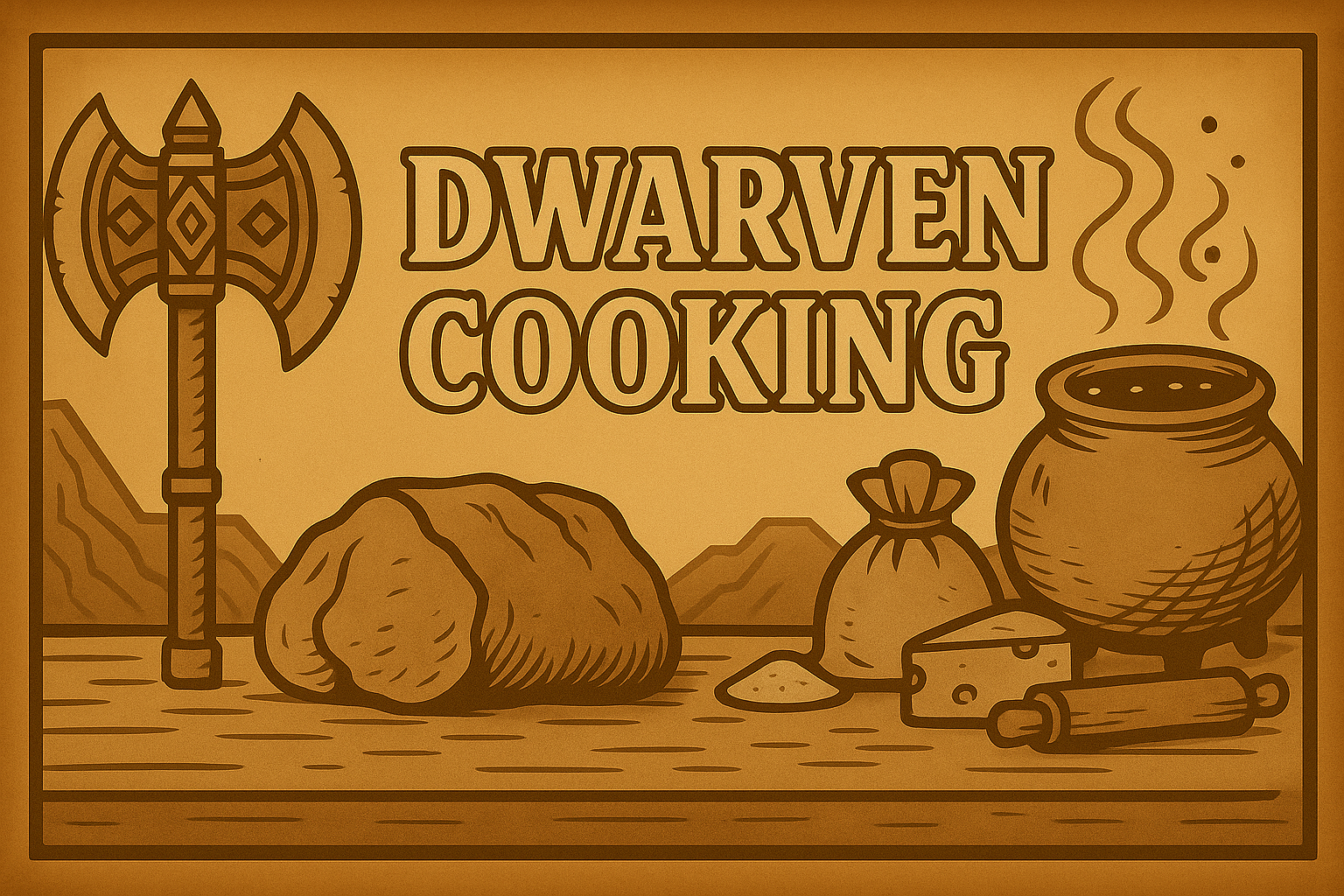Stonebread
Stonebread is the cornerstone of Dwarven cuisine in Largitas—a dense, hearty loaf forged in fire and tradition. With roots stretching back to the earliest days of subterranean life, this durable bread is baked with cave grains, mineral salts, and rich mushroom oil, producing a meal as unyielding as the mountains themselves. Whether served at a family hearth, packed for an expedition into the Bloom, or wielded in tavern brawls, Stonebread is more than sustenance—it’s a symbol of Dwarven resilience, pride, and culture.
"If you can chew it, you've earned it."
Uses in Daily Life
- Meal Staple: Served at every meal, often sliced with a chisel and eaten with broth, cheese, or fungus spreads.
- Emergency Ration: Wrapped in oiled cloth, Stonebread keeps for months—perfect for miners, soldiers, and Bloom scouts.
- Utensil Substitute: In dire times, a thick slice can be used as a plate, bowl, or even a makeshift shield.
- Weapon: Some warrior-chefs train to throw loaves like bludgeons—this has happened more than once in a tavern brawl.
Common Sayings
- “Break bread like you break stone—slow and steady.”
- “If your teeth can’t handle Stonebread, maybe you weren’t born to mine.”
- “A soft loaf makes for soft warriors.”
Manufacturing process
"Three ingredients: grain, salt, and time. And if ye don't have all three, use spite instead."
- Grind and Mix
In a heavy stone bowl, combine all dry ingredients - flour, gravel, salt, and fermenting agent (if used). Stir in water until a stiff, clay-like dough forms. If you can't knead it with one hand and swear with the other, it's too soft. - Shape and Carve
Form into a squat round loaf. Dwarves traditionally carve their family crest or clan rune into the top. Some also mark it with the date - Stonebread ages like iron. - Rest (or Not)
Let the dough sit for 30 minutes to an hour. If you're on a campaign or fleeing a Bloom breach, you can skip this. - Bake in the Fire
Bake directly on hot stone or in a coal-fed oven for 2 hours at very high heat. The outside should harden into a dark crust, nearly black. Tap it - it should sound like knocking on a tomb door. - Cool and Store
Cool on a rack made of hammered iron slats. Once cooled, wrap in oilcloth or waxed linen.
History
Stonebread is said to be as old as Dwarven civilization itself. Legend holds that it was first crafted during the Era of Fire and Ash, when volcanic eruptions drove early Dwarves deep underground. With few crops and even fewer resources, they turned to what they had: cave grains, mineral salts, and mushroom oils.
Significance
Stonebread is more than food—it is tradition, identity, and defiance. To be offered Stonebread is to be welcomed into a dwarf’s hearth and home. To refuse it is a grievous insult.
- Symbol of Resilience: Its hardness is a metaphor for dwarven strength and stubbornness.
- Rites & Rituals: Shared during forging ceremonies, oaths of loyalty, and funerals.
- Sacred Offering: In temples to Terran (God of Earth), loaves are left on altars during holy days.
- 3 cups ground tunnelgrain (or coarse barley/rye flour)
- 1/2 cup crushed ash-gravel (or coarse mineral grit, sanitized and heated)
- 2 tsp salt, preferably cave-mined
- 1 tsp baking ash or fermentroot powder (optional, for rise)
- 1 1/2 cups lukewarm cavewater or mushroom broth
- Optional: 1 tbsp rendered boar tallow or cave oil for richer flavor
- Optional: Diced pickled root, smoked mushroom, or embernut chips for flair





I love the humour worked into this - it's a simple but brilliant article that, as a staple should, tells me a lot about the people who make it.
Thank you! The article still needs quite a bit of work IMO, but I'm glad you like it as it currently is!